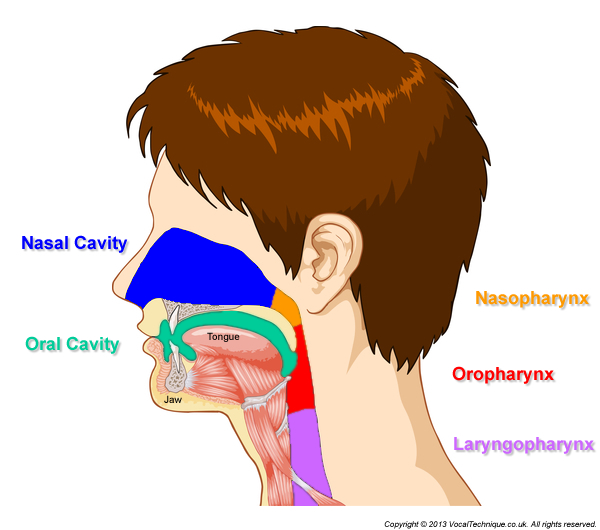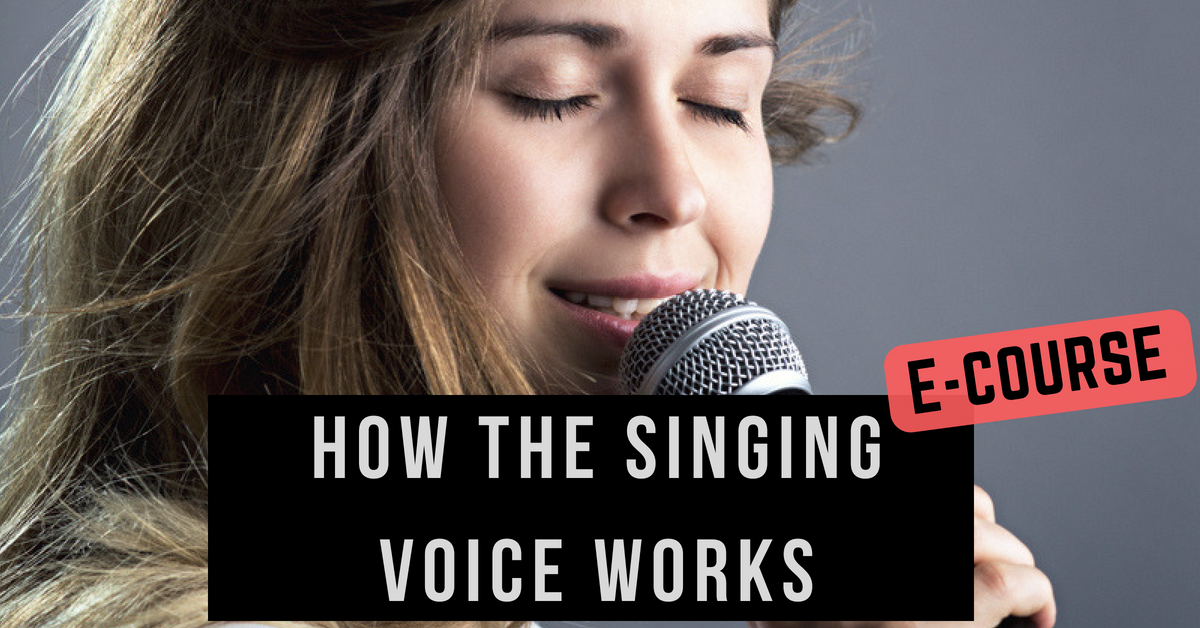
Vocal resonance or placement as it’s sometimes called is a feeling of pressure or buzzing in either the chest, the neck or different areas in the skull. By placing the sound in any one of the places we can influence the timbral quality of that sound. For example, a stern vocal quality can be felt to resonate strongly in the chest. A woolly, airy quality can be felt at the back of the mouth, just above the arch where your uvula dangles from the soft palate. A much brighter, more contemporary resonance can be felt just under the nose in the cheek bones or at the root of the nose. This area is often referred to as “singing in the mask”. This placement is also used in musical theatre.
There are Many Different Vocal Resonance Placements
I have just pointed out several different vocal resonance placements, but the truth is there are many variations in between the vocal resonances placements I have already mentioned. This gives the singer a choice of many tonal colours to colour his words with any tonal quality he/she wishes. To express the sentiment of the lyrics in the song. In learning to sing, isolating at least 4 resonate placements should be the aim of the student to give the student the flexibility to chose different colours.
It’s also important to do this so that all suspensory laryngeal muscular co-ordinations are exercised. For example, if we simply sang in the mask all the time then the antagonistic muscles that brace against singing in the mask would be weak. Thus we would lack control over singing in the mask. This is why it’s important to regularly work forward placements (bright resonances) and back placements (dark resonances). Once learning to sing by a resonance placement has been understood and mastered most singing problems disappear.
Please look at the top of this post for a breakdown of the anatomy of the head and its resonating chambers.
As you can see in the picture at the top of this post the first place the sound goes once it has been created in the larynx (vocal folds vibrating), is the pharynx, which can be broken down further into three parts, the Laryngopharynx, Oropharynx and the Nasopharynx (which can be closed at will), the pharynx is the largest of the resonators, and thus influences the sound the most, if the pharynx (throat) is strained when you sing then the walls of the pharynx will be harder and as a result less of the overtones are absorbed so the sound that comes out is more strident or shrill, if the throat is allowed to be relaxed (the sensation is in singing as if you are not using your throat at all) then more of the unpleasant overtones are absorbed and the sound will be more pleasant, if you over do this and darken the sound too much then the sound could be described as sounding swallowed, and it will have no focus, so as with everything in life there must be balance, in order to get the best sound.
After the throat (Pharynx) the sound travels through the Oral cavity (mouth), and here more resonance is added (if you hum then you should feel your lips vibrating, this is oral resonance).
Vocal Resonance Your Voice Equalizer!
How much nasal resonance is in the voice is a matter of taste, but the sound of nasal resonance in its purest form is a honky sound, just pinch your nose and talk and you will see want I mean! For nasal resonance to be present in the voice the soft palate (velum) must not be high but low, so for a clear voice, the vellum should be high to minimize nasal resonance, by blocking the path to the nasal cavity.
Resonance is like a vocal equalizer it can be blended to lighten or darken the sound, depending on what the dynamics of the lyric demands.
You might like to check out vocal tone now as this is the next piece of the puzzle that leads on from vocal resonance.
If you would like to explore vocal resonance with me, then please check out my singing lessons page for more information.
Hi, I’m Dylan, I’ve been teaching people to sing professionally now for 20 years! I love my job and helping people to sing their very best.
That’s why I created this website (vocaltechnique.co.uk) to help people that want to teach themselves to sing or just want to know more about singing.
It’s been my pleasure to help all levels of singer to reach their singing dreams.
My new singing course “How the Singing Voice Works” is below. Check it out if your interested. 🙂
 [tcb-script type=”text/javascript”]document.getElementById(“thinkific-product-embed”) || document.write(‘<script id=”thinkific-product-embed” type=”text/javascript” src=”https://assets.thinkific.com/js/embeds/product-cards-client.min.js”><\/script>’);[/tcb-script][tcb-noscript]Buy Now $9.99[/tcb-noscript]
[tcb-script type=”text/javascript”]document.getElementById(“thinkific-product-embed”) || document.write(‘<script id=”thinkific-product-embed” type=”text/javascript” src=”https://assets.thinkific.com/js/embeds/product-cards-client.min.js”><\/script>’);[/tcb-script][tcb-noscript]Buy Now $9.99[/tcb-noscript]

